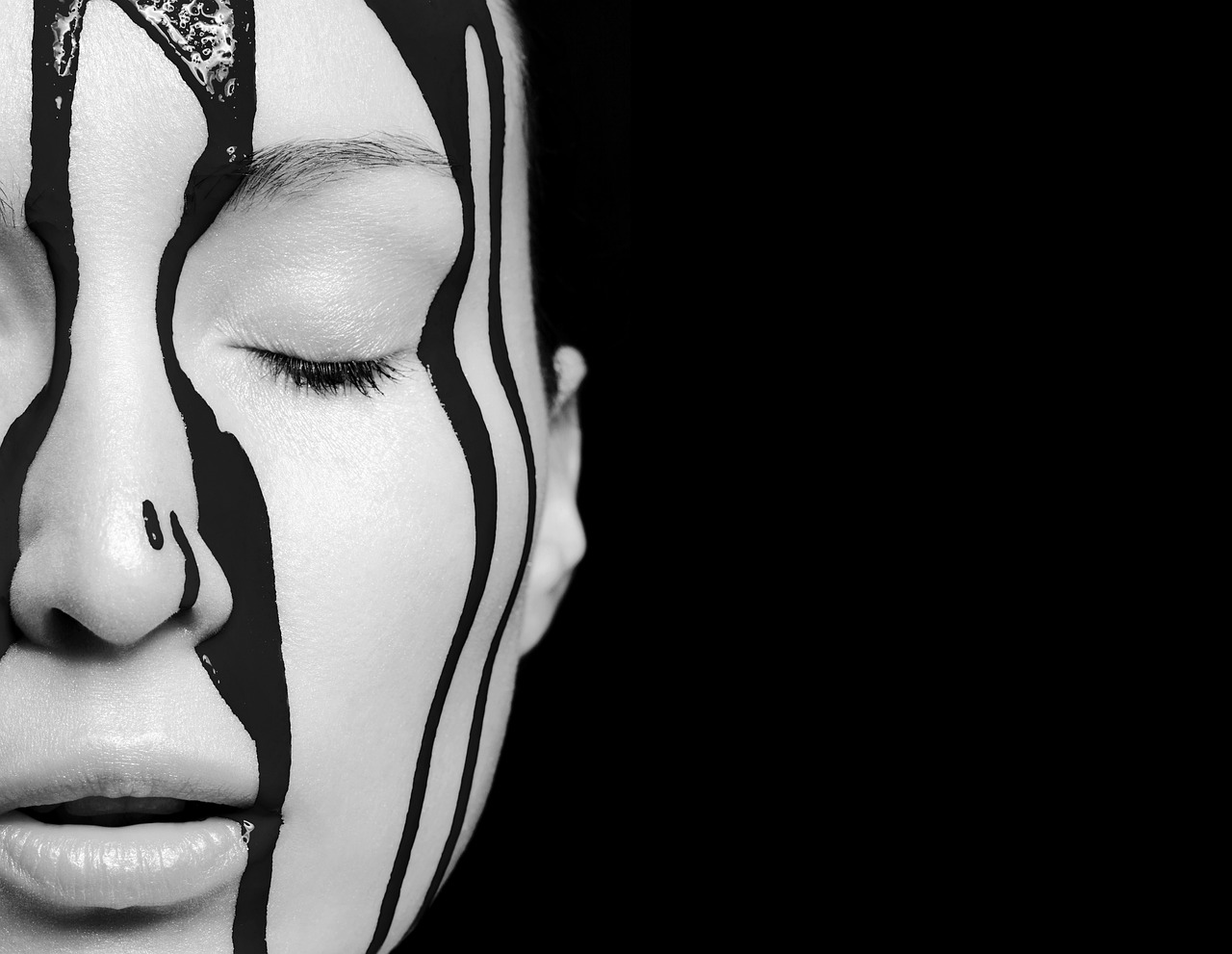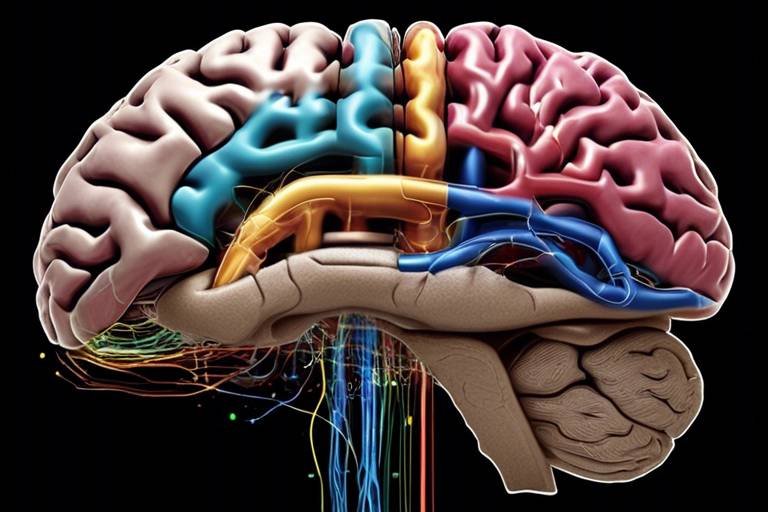Techniques of Exploring the Subconscious Mind
Exploring the subconscious mind is like embarking on a thrilling adventure into the depths of your own psyche. It's a journey that can unveil hidden thoughts, feelings, and desires that shape your everyday life. Imagine diving into a vast ocean, where every wave represents a different aspect of your mind, waiting to be discovered. In this article, we will delve into various methods and practices designed to access and understand the subconscious, highlighting their potential benefits for personal growth and self-discovery.
Understanding the subconscious mind is crucial because it acts as a reservoir of memories, experiences, and emotions that influence our behaviors and decisions. By employing techniques such as meditation, hypnosis, dream analysis, and creative visualization, we can unlock the door to our subconscious, allowing us to gain insights that can lead to profound personal transformation.
As we navigate through these techniques, consider this: What if the key to overcoming your fears, achieving your goals, or enhancing your creativity lies just beneath the surface of your conscious awareness? By using these methods, you can not only explore the depths of your subconscious but also harness its power to create positive changes in your life.
Now, let’s dive deeper into these fascinating techniques, starting with meditation, which serves as a powerful tool for accessing the subconscious. Are you ready to unlock the secrets of your mind? Let’s go!

Meditation Techniques
Meditation serves as a powerful tool for accessing the subconscious. By quieting the mind, we create a pathway to deeper introspection and self-awareness. Imagine your mind as a bustling city—full of noise, distractions, and chaos. Now, picture meditation as a peaceful park in the heart of that city, a serene space where you can pause, reflect, and connect with your inner self. There are various meditation techniques that can help you navigate this journey, each offering unique benefits and experiences. Let's dive into some of these techniques and discover how they can facilitate your journey into the subconscious.
One popular method is mindfulness meditation. This technique encourages you to focus on the present moment, observing your thoughts and feelings without judgment. It's like watching clouds float by in the sky; you notice them, but you don't get caught up in their shapes or colors. By practicing mindfulness, you train your brain to become more aware of your internal landscape, allowing you to access deeper layers of your subconscious.
Another effective technique is guided meditation. In this practice, you listen to a narrator who leads you through a series of visualizations and affirmations. Think of it as a friendly tour guide taking you on a journey through your mind. Guided meditations can help you explore specific themes, such as relaxation, confidence, or healing, making it easier to tap into your subconscious desires and fears.
For those who prefer a more dynamic approach, movement-based meditation, such as yoga or tai chi, can be incredibly beneficial. These practices combine physical movement with breath awareness, creating a harmonious connection between body and mind. As you flow through each pose or movement, you release tension and open yourself up to deeper insights. It's like dancing with your thoughts—each movement allows you to express and understand what lies beneath the surface.
To enhance your meditation practice, consider creating a meditation space at home. This dedicated area, free from distractions, can serve as your personal sanctuary. Fill it with items that inspire tranquility, such as candles, cushions, or calming artwork. Establishing a routine where you meditate at the same time each day can also help reinforce the practice, making it a cherished part of your daily life.
In conclusion, meditation techniques are a gateway to unlocking the mysteries of your subconscious mind. Whether you choose mindfulness, guided sessions, or movement-based practices, the key is consistency and intention. Remember, the journey within is as important as the destination, so embrace each moment of reflection and discovery. As you delve deeper, you may find that the insights gained from your subconscious can lead to profound personal growth and transformation.

Hypnosis and Self-Hypnosis
Hypnosis is an intriguing method that allows individuals to tap into their subconscious mind, unlocking a treasure trove of insights and potential for personal transformation. Imagine having the ability to bypass the conscious filters of your mind, diving deep into the layers of your thoughts and emotions. This is precisely what hypnosis offers. But wait, you might be wondering, how does this all work? Let’s explore the principles of hypnosis and the empowering practice of self-hypnosis.
At its core, hypnosis is a state of focused attention and heightened suggestibility. It’s like being in a trance where your mind is open to new ideas and perspectives. This state can lead to profound changes in behavior, perception, and emotional well-being. Self-hypnosis, on the other hand, is the practice of inducing this state on your own. It’s akin to being the captain of your own ship, steering your mind towards desired outcomes without needing a guide. With practice, anyone can learn the techniques of self-hypnosis to enhance their life.
So, what are the principles behind hypnosis? Essentially, it revolves around the concept of suggestion. When you’re in a hypnotic state, your subconscious mind is more receptive to suggestions, which can help you overcome obstacles or change habits. For instance, if you’ve been struggling with anxiety, a well-crafted suggestion during hypnosis could help you feel more relaxed and in control. This is the magic of tapping into the subconscious!
To illustrate this further, let’s break down the process of self-hypnosis into a few essential steps:
- Find a Quiet Space: Choose a comfortable and quiet environment where you won’t be disturbed.
- Set a Clear Intention: Determine what you want to achieve with your self-hypnosis session. It could be anything from reducing stress to improving focus.
- Use Relaxation Techniques: Start by taking deep breaths and progressively relaxing your body. Imagine each part of your body becoming heavy and relaxed.
- Induce Hypnosis: Use techniques such as visualization or counting down to guide yourself into a hypnotic state.
- Give Suggestions: Once in a relaxed state, repeat positive affirmations or suggestions that align with your goals.
- Awaken Gently: After a set period, gradually bring yourself back to full awareness, feeling refreshed and empowered.
Self-hypnosis can be a game-changer, providing tools for personal growth that are easily accessible. It’s like having a personal coach available at any time, ready to help you overcome challenges and reach your goals. The beauty of this practice lies in its versatility; you can tailor it to suit your individual needs, whether it's to enhance creativity, build confidence, or even improve your sleep.
In summary, hypnosis and self-hypnosis are powerful techniques for exploring the subconscious mind. They offer a pathway to understanding yourself better, breaking free from limiting beliefs, and facilitating personal transformation. By learning to harness these techniques, you can unlock a new level of self-awareness and potential that may have previously been out of reach.
1. Is hypnosis safe?
Yes, hypnosis is generally considered safe when practiced by a trained professional or when self-hypnosis techniques are followed correctly. It’s important to approach it with an open mind and a clear intention.
2. Can anyone be hypnotized?
Most people can be hypnotized to some degree, but susceptibility varies. Some individuals may find it easier to enter a hypnotic state than others.
3. How long does a self-hypnosis session last?
A self-hypnosis session typically lasts between 10 to 30 minutes, depending on your goals and comfort level.
4. What can I achieve through self-hypnosis?
Self-hypnosis can help with a variety of issues, including stress reduction, pain management, improved sleep, and breaking unhealthy habits.
5. Do I need a professional to practice self-hypnosis?
No, while professionals can guide you, self-hypnosis can be learned and practiced independently with the right techniques and commitment.

Understanding Hypnotic States
When we talk about hypnotic states, it's essential to realize that these are not just some mystical realms; they are scientifically recognized states of consciousness that can profoundly impact our subconscious mind. Think of it like diving into a pool: the surface may look calm, but beneath lies a world of exploration waiting to be discovered. Each hypnotic state offers a unique depth of access to our subconscious, allowing us to tap into thoughts, memories, and feelings that are often hidden from our conscious mind.
There are generally three primary hypnotic states that individuals can experience:
- Light Hypnosis: This is akin to daydreaming, where the mind is relaxed, yet still aware of the surroundings. In this state, individuals may feel calm and focused, making it an excellent entry point for suggestions.
- Medium Hypnosis: At this level, the individual enters a deeper state of relaxation. Thoughts may drift, and the subconscious becomes more receptive to suggestions. It's like being in a cozy trance where the outside world fades away.
- Deep Hypnosis: This state resembles sleep, where the subconscious mind is highly accessible. Here, profound changes can occur, as the individual can connect with deeper emotional issues or memories, often leading to significant breakthroughs.
Understanding these states is crucial for anyone interested in utilizing hypnosis for personal growth or therapy. Each state can lead to different levels of subconscious access and insight, making it vital to choose the appropriate state for the desired outcome. For instance, if someone is looking to manage stress, light hypnosis may suffice. However, for deeper emotional healing, a medium or deep state might be necessary.
Moreover, the transition between these states can often be facilitated by specific induction techniques, which are methods used to guide a person into hypnosis. These techniques can range from simple breathing exercises to more complex guided imagery that helps the individual relax and focus inward. Understanding how to navigate these states and the accompanying techniques can significantly enhance the effectiveness of hypnosis.
In summary, the journey into understanding hypnotic states is like peeling back the layers of an onion—each layer revealing more about our inner selves. By recognizing the different states and their potentials, we empower ourselves to explore our subconscious mind more effectively. So, whether you're looking to overcome a fear, improve a habit, or just gain a deeper understanding of yourself, recognizing and utilizing these hypnotic states can be a game-changer.
- What is hypnosis? Hypnosis is a state of focused attention and heightened suggestibility, often used for therapeutic purposes.
- Can anyone be hypnotized? Most people can be hypnotized, but susceptibility can vary from person to person.
- Is hypnosis safe? Yes, when conducted by a trained professional, hypnosis is considered safe.
- How long does a typical hypnosis session last? Sessions usually last between 30 minutes to an hour.

Induction Techniques
Induction techniques are the essential first steps in the hypnotic process, acting as the bridge between the conscious mind and the depths of the subconscious. Imagine standing at the edge of a serene lake, the surface calm and inviting, yet beneath the water lies a world of wonders waiting to be explored. Induction techniques help you gently ease into this tranquil state, allowing you to dive deep into your inner self. Whether you're looking to relieve stress, unlock creativity, or confront personal challenges, mastering these techniques can significantly enhance your journey.
There are several methods to initiate hypnosis, each designed to facilitate relaxation and focus. Here are some commonly used techniques:
- Progressive Relaxation: This technique involves gradually relaxing each muscle group in the body, starting from the toes and moving up to the head. By focusing on releasing tension, you create a sense of calm that prepares you for deeper exploration.
- Guided Imagery: In this method, a hypnotist or recording leads you through a series of visualizations, helping you imagine a peaceful scene or a journey. This immersive experience can help distract the conscious mind and open the door to the subconscious.
- Breath Control: Focusing on your breath can anchor you in the present moment. By taking slow, deep breaths, you can reduce anxiety and create a rhythmic pattern that encourages relaxation.
Each of these techniques serves as a tool to help you achieve a relaxed state, but the key is to find what resonates with you. It’s essential to create an environment that feels safe and comfortable. Think of it like setting the stage for a great performance; the right atmosphere can make all the difference. Dim the lights, play soothing music, or even use aromatherapy to enhance your experience.
Once you've entered a relaxed state, you can deepen your hypnotic experience through various methods, such as visualization or affirmations. Visualization involves imagining a specific scenario where you feel calm and in control, while affirmations are positive statements that reinforce your goals. For instance, if you're aiming to overcome a fear, you might visualize yourself facing that fear confidently while repeating affirmations like, "I am strong and capable."
In summary, mastering induction techniques is like learning to ride a bike. At first, it may feel awkward, and you might wobble a bit, but with practice, you gain balance and confidence. The more you practice, the easier it becomes to slip into that hypnotic state, allowing you to explore the vast landscape of your subconscious mind. So, take a deep breath, relax, and prepare to embark on an incredible journey within.
Q: How long does it take to enter a hypnotic state?
A: The time it takes to enter a hypnotic state varies from person to person. Some may find themselves in a relaxed state within minutes, while others may take longer. Consistent practice can help speed up the process.
Q: Can anyone be hypnotized?
A: Most people can be hypnotized, but susceptibility varies. Factors such as openness to the process and the ability to focus can influence how easily someone enters hypnosis.
Q: Is hypnosis safe?
A: Yes, hypnosis is generally considered safe when conducted by a trained professional. It's important to approach it with an open mind and a willingness to explore.
Q: What if I can’t remember anything after hypnosis?
A: It's normal for some individuals to have limited recall after a session. The subconscious mind often retains the insights gained, even if they aren't immediately accessible.
Q: How often should I practice induction techniques?
A: Regular practice, such as a few times a week, can enhance your ability to enter hypnosis and deepen your experience. Consistency is key!

Post-Hypnotic Suggestions
Post-hypnotic suggestions are a fascinating aspect of hypnosis that can significantly influence behavior long after the hypnotic session has ended. Imagine planting a seed in fertile soil; with the right nurturing, that seed can grow into a flourishing plant. Similarly, post-hypnotic suggestions can take root in the subconscious mind, leading to profound changes in thoughts, feelings, and actions. These suggestions are verbal cues given during hypnosis that the individual will act upon or remember after they emerge from the trance state.
To make these suggestions effective, it's crucial to frame them correctly. They should be positive, specific, and present tense. For example, instead of saying, "You will not feel anxious," a better suggestion would be, "You feel calm and confident in social situations." This subtle shift in wording can make a remarkable difference in how the subconscious interprets and responds to the suggestion.
Moreover, timing plays a vital role in the effectiveness of post-hypnotic suggestions. Delivering these suggestions at the end of a session, when the individual is deeply relaxed and receptive, can enhance their impact. It's during this state of heightened suggestibility that the subconscious mind is most open to new ideas and changes. The key is to ensure that the suggestions resonate with the individual's goals and aspirations, making it easier for them to embrace the changes.
In practice, post-hypnotic suggestions can be used for various purposes, such as:
- Overcoming fears and phobias
- Improving self-esteem and confidence
- Enhancing focus and concentration
- Breaking bad habits, like smoking or overeating
After the session, individuals may notice subtle shifts in their behavior or mindset. For instance, someone who received a suggestion to feel more confident in public speaking might find themselves more at ease when addressing a crowd. This is the beauty of post-hypnotic suggestions—they work quietly in the background, often leading to changes that feel natural and effortless.
It's essential to note that while post-hypnotic suggestions can be incredibly powerful, they are not a magic bullet. The individual must be willing to embrace the change and actively work towards their goals. Think of it as a partnership between the hypnotist and the individual, where both parties contribute to the journey of transformation.
In conclusion, post-hypnotic suggestions are a valuable tool in the realm of hypnosis, capable of fostering lasting change in one’s life. By understanding how to formulate and deliver these suggestions effectively, individuals can unlock their potential and achieve their desired outcomes.
- What are post-hypnotic suggestions? They are cues given during hypnosis that influence behavior after the session.
- How do I create effective post-hypnotic suggestions? Frame them positively, specifically, and in the present tense.
- Can anyone use post-hypnotic suggestions? Yes, as long as the individual is open and willing to change.
- Are post-hypnotic suggestions permanent? They can lead to lasting change, but the individual must actively engage in the process.

Applications of Hypnosis
Hypnosis is not just a fascinating spectacle you might see in movies; it’s a robust tool that can lead to profound personal transformation. Many people remain unaware of the **amazing potential** hypnosis holds in various aspects of life. From therapy to stress management and even overcoming fears, hypnosis offers a myriad of applications that can enhance personal development.
One of the most significant applications of hypnosis is in the realm of **therapy**. Therapists often utilize hypnosis to help clients access deeper parts of their subconscious that may be difficult to reach through conventional talk therapy. This can be particularly beneficial for those dealing with trauma or anxiety, as it allows them to confront and process their emotions in a safe and controlled environment. By guiding clients into a relaxed state, therapists can help them explore their thoughts and feelings, leading to **insights** that promote healing and growth.
Moreover, hypnosis can be a powerful ally in **stress management**. In today’s fast-paced world, stress has become a common companion for many. Hypnosis helps individuals achieve a state of deep relaxation, effectively reducing stress levels. When the mind is calm, it becomes easier to manage daily challenges and pressures. This technique can be particularly useful for those who struggle with chronic stress or anxiety, as it provides a structured way to unwind and refocus.
Additionally, hypnosis is often employed to help individuals **overcome fears** and phobias. Whether it’s a fear of flying, public speaking, or even spiders, hypnosis can assist in reprogramming the subconscious mind. By addressing the root causes of these fears, individuals can learn to respond to them in a more positive and relaxed manner. This application of hypnosis not only empowers individuals to confront their fears but also helps them regain control over their lives.
To illustrate the versatility of hypnosis, here’s a table summarizing its various applications:
| Application | Description |
|---|---|
| Therapy | Helps clients access deeper subconscious thoughts for healing. |
| Stress Management | Induces relaxation to reduce stress and anxiety levels. |
| Overcoming Fears | Addresses and reprograms fears and phobias. |
| Habit Change | Aids in breaking unwanted habits like smoking or overeating. |
| Pain Management | Can be used to alleviate chronic pain conditions. |
In conclusion, the applications of hypnosis are as diverse as they are impactful. Whether you're looking to improve your mental health, manage stress, confront your fears, or even change habits, hypnosis can serve as a valuable tool in your personal development toolkit. So, why not consider exploring this fascinating method? You might just discover a new path to **self-discovery** and empowerment!
- What is hypnosis? Hypnosis is a trance-like state of focused attention and increased suggestibility, often used for therapeutic purposes.
- Is hypnosis safe? Yes, when conducted by a trained professional, hypnosis is considered safe and can be an effective therapeutic tool.
- Can anyone be hypnotized? Most people can be hypnotized, but the level of susceptibility varies from person to person.
- How does hypnosis help with stress? Hypnosis promotes deep relaxation, which helps to reduce stress and anxiety levels in the body and mind.
- Can I be made to do something against my will during hypnosis? No, hypnosis cannot force someone to do something they are uncomfortable with or against their morals.

Dream Analysis
Dreams are often regarded as the gateway to the subconscious, providing a unique glimpse into our hidden thoughts, emotions, and desires. When we drift off to sleep, our minds can conjure up vivid stories and images that may seem nonsensical at first glance. However, each dream holds the potential to reveal profound insights about our waking lives. By engaging in , individuals can unlock the mysteries of their subconscious, facilitating a deeper understanding of themselves. So, how exactly does this process work, and what can we learn from our nightly adventures?
At its core, dream analysis is about interpreting the symbols and narratives that emerge during sleep. Each dream is a reflection of our inner world, often shaped by our experiences, emotions, and unresolved issues. A dream about flying, for instance, might symbolize a desire for freedom or escape, while a dream about falling could indicate feelings of insecurity or loss of control. By examining these symbols, we can gain valuable insights into our fears, aspirations, and even our relationships.
One effective way to enhance dream analysis is by keeping a dream journal. This practice involves writing down your dreams as soon as you wake up, capturing the details while they are still fresh in your mind. Over time, patterns may emerge, revealing recurring themes or symbols that can be further explored. For example, if you frequently dream about water, it might signify emotional fluidity or the need to confront your feelings. By documenting these dreams, you create a personal roadmap to your subconscious.
Moreover, understanding common dream symbols can greatly enhance your analytical skills. Here’s a brief table of some common dream symbols and their potential meanings:
| Symbol | Potential Meaning |
|---|---|
| Water | Emotions, unconscious thoughts |
| Flying | Freedom, escape, ambition |
| Falling | Insecurity, loss of control |
| Teeth | Fear of aging, loss, or powerlessness |
| Chase | Running from fears or unresolved issues |
By familiarizing yourself with these symbols, you can begin to decode the messages your subconscious is trying to convey. However, it’s important to remember that dream interpretation is highly subjective; the same symbol may hold different meanings for different people. Therefore, it’s crucial to consider your personal context when analyzing your dreams.
Another fascinating aspect of dream analysis is the practice of lucid dreaming, where individuals become aware that they are dreaming while still in the dream state. This heightened awareness allows for intentional exploration of the subconscious, offering a unique opportunity to confront fears or rehearse real-life scenarios. Imagine being able to face that daunting presentation or resolve a conflict with a loved one, all within the safety of your dreams. Lucid dreaming can serve as a powerful tool for personal growth and self-discovery.
In conclusion, dream analysis opens up a world of possibilities for understanding the complexities of our inner selves. By interpreting the symbols, keeping a dream journal, and even exploring lucid dreaming, we can tap into the rich tapestry of our subconscious. So, the next time you wake up from a vivid dream, take a moment to reflect on its meaning. You might just uncover a treasure trove of insights waiting to be discovered.
- What is the purpose of dream analysis? Dream analysis helps individuals understand their subconscious thoughts and emotions, revealing insights that can facilitate personal growth.
- How can I remember my dreams better? Keeping a dream journal and practicing relaxation techniques before sleep can improve dream recall.
- Is dream interpretation the same for everyone? No, dream interpretation is subjective and can vary based on personal experiences and emotions.
- What are some common symbols in dreams? Common symbols include water, flying, falling, teeth, and being chased, each with its own potential meanings.

Common Dream Symbols
Dreams are often considered the language of the subconscious, filled with symbols that can reveal hidden thoughts, feelings, and desires. Understanding these symbols can be a powerful tool for self-discovery and personal growth. Each symbol carries its own significance, and while interpretations can vary, there are some common themes that many people experience. For instance, dreaming about flying often represents a desire for freedom or escape from the constraints of daily life. Similarly, falling in dreams can indicate feelings of insecurity or loss of control.
To help you navigate the rich tapestry of dream symbols, here are some common ones and their potential meanings:
| Dream Symbol | Possible Meaning |
|---|---|
| Flying | Freedom, ambition, or a desire to rise above challenges |
| Falling | Insecurity, loss of control, or fear of failure |
| Water | Emotions, the subconscious mind, or the flow of life |
| Being Chased | Feeling threatened, avoidance of an issue, or anxiety |
| Teeth Falling Out | Concerns about appearance, aging, or loss of power |
As you can see, dream symbols can provide valuable insights into our inner world. For example, if you frequently dream about water, it might be worth exploring your emotional state. Are you feeling overwhelmed or in a state of flux? On the other hand, if you're often being chased, it might indicate that there are unresolved issues in your waking life that you need to confront. The key is to reflect on the emotions you felt during the dream and how they relate to your current life circumstances.
Additionally, it's important to remember that the meanings of dream symbols can be highly personal. What flying means to one person might differ for another, depending on their life experiences and emotional context. Therefore, keeping a dream journal can be an excellent way to explore your dreams further. By jotting down your dreams and your feelings about them, you can begin to identify patterns and gain a deeper understanding of your subconscious mind.
In summary, common dream symbols serve as a bridge to understanding our subconscious. By paying attention to these symbols and reflecting on their meanings, we can unlock valuable insights that contribute to our personal growth and self-discovery. So the next time you wake up from a vivid dream, take a moment to ponder its significance—your subconscious might be trying to tell you something important!
- What are dream symbols? Dream symbols are images, objects, or themes that appear in dreams and carry specific meanings related to our subconscious thoughts and emotions.
- How can I interpret my dreams? To interpret your dreams, consider the symbols you encountered, your feelings during the dream, and how they relate to your waking life. Keeping a dream journal can also help identify patterns.
- Are dream interpretations universal? While some dream symbols may have common meanings, interpretations can vary widely based on individual experiences and emotions.
- What should I do if I have recurring dreams? Recurring dreams often indicate unresolved issues or emotions. Reflecting on their content and seeking to address the underlying concerns can help in resolving them.

Lucid Dreaming Techniques
Lucid dreaming is an extraordinary state where you become aware that you are dreaming while still in the dream. Imagine being the director of your own movie, where you can shape the plot and characters at will! This magical experience can be achieved through various techniques, each designed to enhance your ability to recognize and control your dreams. Let’s dive into some effective methods that can help you unlock this fascinating realm of consciousness.
One popular technique is the Reality Check. This involves regularly questioning whether you are awake or dreaming throughout your day. You might ask yourself, "Am I dreaming?" and perform a simple action, like trying to push your finger through your palm. In waking life, this won’t happen, but in a dream, it might. By making this a habit, you can carry this questioning into your dreams, triggering lucidity. It’s like training your brain to recognize the signs of dreaming, much like a detective gathering clues.
Another effective method is Mnemonic Induction of Lucid Dreams (MILD). This technique involves setting an intention to remember that you are dreaming. Before you fall asleep, repeat a phrase like, "I will realize I am dreaming." This simple mantra acts as a mental anchor, helping you to remember your goal while you drift off. It’s akin to leaving a breadcrumb trail in the forest of your subconscious, guiding you back to awareness when you’re lost in the dream world.
Additionally, the Wake-Back-to-Bed (WBTB) technique can significantly boost your chances of experiencing a lucid dream. This method involves waking up after 5-6 hours of sleep, staying awake for a short period—about 20-30 minutes—and then going back to sleep. This interruption can enhance your REM sleep, where dreams occur, making it easier to achieve lucidity. Think of it as hitting the refresh button on your dream machine, allowing you to dive deeper into the subconscious waters.
Lastly, consider keeping a Dream Journal. Recording your dreams as soon as you wake up can improve your dream recall and help you identify recurring themes or symbols within your dreams. Over time, this practice can enhance your awareness and increase your chances of becoming lucid. It’s like piecing together a puzzle, where each entry brings you closer to understanding the bigger picture of your subconscious mind.
Incorporating these techniques into your routine can transform your dreaming experience. Remember, patience is key. Just like learning to ride a bike, it may take some time to find your balance in the world of lucid dreaming. Embrace the journey and enjoy the ride!
- What is lucid dreaming? Lucid dreaming is when you become aware that you are dreaming and can often control the dream.
- Is it safe to try lucid dreaming? Yes, lucid dreaming is generally considered safe. However, individuals with certain mental health conditions should consult a professional before attempting it.
- How can I remember my dreams better? Keeping a dream journal and practicing reality checks can significantly improve dream recall.
- Can everyone learn to lucid dream? Most people can learn to lucid dream with practice and the right techniques, though some may find it easier than others.

Creative Visualization
Creative visualization is more than just a buzzword; it's a profound technique that taps into the power of our imagination to influence the subconscious mind. Imagine your mind as a vast canvas, where every thought and image you create can manifest into reality. When you visualize your goals and desires vividly, you're essentially programming your subconscious to work toward achieving them. This practice is not just for daydreamers; it's a method backed by psychology and personal development strategies.
To harness the full potential of creative visualization, it’s essential to understand how to effectively engage your imagination. Start by finding a quiet space where you can relax without distractions. Close your eyes and take a few deep breaths to center yourself. Once you feel calm, begin to visualize your goal as if it has already been accomplished. Picture every detail—what you see, hear, and even feel. This immersive experience signals to your subconscious that your desired outcome is not just a possibility but a reality.
One of the key aspects of creative visualization is consistency. Like any skill, the more you practice, the better you become. Set aside time each day to engage in this practice. You might even want to incorporate it into your morning routine or use it as a calming ritual before bed. By regularly visualizing your goals, you reinforce the belief that you can achieve them, which in turn activates your subconscious mind to seek out opportunities that align with your vision.
Here are a few steps to make your creative visualization practice even more effective:
- Set Clear Intentions: Be specific about what you want to achieve. The clearer your vision, the easier it is for your subconscious to understand and act upon it.
- Engage All Senses: Don’t just see your goal; feel it, hear it, and even taste it. The more sensory details you include, the more powerful your visualization becomes.
- Feel the Emotions: Connect emotionally with your visualization. Feel the joy, excitement, and gratitude as if you have already achieved your goal. This emotional connection enhances the effectiveness of your practice.
Creative visualization isn’t just a standalone practice; it can also be integrated into therapeutic settings. Many therapists utilize visualization techniques to help clients overcome obstacles and foster healing. For instance, if someone is struggling with anxiety, a therapist might guide them through a visualization exercise where they imagine themselves in a peaceful, safe place. This can help to reduce stress and promote a sense of calm, illustrating the versatility of creative visualization in personal development.
In conclusion, creative visualization is a powerful tool that allows you to tap into the depths of your subconscious mind. By regularly practicing this technique, you can not only clarify your goals but also create a mental environment conducive to success. So, why not give it a try? Start today, and watch as your dreams begin to manifest into reality!
1. What is creative visualization?
Creative visualization is a technique that involves using your imagination to create mental images of your goals and desires, effectively programming your subconscious mind to work towards achieving them.
2. How often should I practice creative visualization?
For best results, aim to practice daily. Consistency is key in reinforcing your intentions and beliefs.
3. Can creative visualization really help me achieve my goals?
Yes! By visualizing your goals and connecting emotionally with the outcomes, you activate your subconscious to help identify opportunities and take actions that align with your aspirations.
4. Do I need to be a skilled meditator to practice creative visualization?
Not at all! While meditation can enhance your visualization practice, anyone can start visualizing their goals with a little guidance and practice.

Steps for Effective Visualization
Effective visualization is like painting a masterpiece in your mind; it requires clarity, focus, and a bit of creativity. To harness the power of your imagination and influence your subconscious, you can follow several key steps that will guide you on this enlightening journey. First, it’s essential to create a calm environment. Find a quiet space where distractions are minimal, allowing your mind to settle. Just like a painter needs a clean canvas, your mind needs a serene backdrop to begin the visualization process.
Next, set a clear intention. What do you want to visualize? Whether it’s achieving a personal goal, enhancing your skills, or manifesting a desired outcome, having a specific target is crucial. This intention acts as your guiding star, directing your thoughts and energies towards what you truly desire. Imagine aiming at a dartboard; if you don’t know where to aim, you may miss the mark entirely.
Once your intention is set, engage your senses. Visualization is not just about seeing; it’s about experiencing. Close your eyes and immerse yourself in the scene you want to create. What do you see? What sounds are present? What emotions do you feel? By involving all your senses, you deepen the experience, making it more vivid and impactful. Think of it as a movie playing in your mind, where you are both the director and the star.
Another vital step is to practice regularly. Like any skill, visualization improves with repetition. Set aside time each day to visualize your goals and desires. This consistency reinforces your intention and helps to embed these images in your subconscious. Over time, you’ll notice that your ability to visualize becomes stronger and more effective, much like a muscle that grows with regular exercise.
Finally, trust the process. Visualization is not a magic trick; it requires patience and belief. Trust that the more you visualize, the more you align your subconscious with your conscious goals. It’s akin to planting a seed; you must nurture it with care and patience before it blossoms into reality. Keep a positive mindset and remain open to the possibilities that arise from your visualization efforts.
In summary, the steps for effective visualization include:
- Creating a calm environment
- Setting a clear intention
- Engaging all your senses
- Practicing regularly
- Trusting the process
By following these steps, you can unlock the transformative power of visualization and pave the way for personal growth and success. Remember, your mind is a powerful tool; use it wisely to manifest the life you desire.
Q: How long should I practice visualization each day?
A: Ideally, aim for at least 10-15 minutes daily. However, even a few minutes can be beneficial if done consistently.
Q: Can visualization help with anxiety or stress?
A: Yes, visualization can be a calming technique that helps reduce anxiety and stress by allowing you to focus on positive outcomes and peaceful scenarios.
Q: What if I find it hard to visualize?
A: It’s normal to struggle initially. Start by visualizing simple objects or scenes, and gradually work your way up to more complex images. Practice will enhance your ability.
Q: Is there a specific time of day that’s best for visualization?
A: Many people find that early morning or just before bed are ideal times, as the mind is more open and relaxed during these periods.

Visualization in Therapy
Visualization in therapy is a transformative process that harnesses the power of the mind to promote healing and personal development. When clients engage in visualization techniques, they create mental images that can evoke emotions, facilitate relaxation, and encourage positive changes in their lives. This method is not just about daydreaming; it’s a structured approach that therapists use to help clients overcome challenges, set goals, and achieve a greater sense of well-being.
During therapy sessions, therapists guide clients through various visualization exercises tailored to their specific needs. For instance, a therapist might ask a client to visualize a peaceful place, allowing them to tap into feelings of calm and safety. This mental imagery can be particularly effective for individuals dealing with anxiety or stress, providing them with a coping mechanism that they can access anytime. The beauty of visualization is that it empowers clients to take control of their mental state, much like a conductor leading an orchestra, harmonizing their thoughts and emotions into a symphony of peace.
Moreover, visualization can play a crucial role in goal setting and motivation. Clients are encouraged to vividly picture their desired outcomes, whether it’s achieving a personal milestone or overcoming a fear. By creating a clear mental image of success, individuals can enhance their motivation and commitment. It’s akin to an athlete visualizing their performance before a big game; the mind becomes a powerful ally in the journey towards achievement.
Therapists often incorporate visualization into various therapeutic modalities, including cognitive-behavioral therapy (CBT) and mindfulness practices. For example, in CBT, clients may visualize challenging situations and rehearse positive responses, thereby preparing them for real-life encounters. This not only builds confidence but also reduces the fear associated with those situations.
As part of the therapeutic process, clients may also engage in guided imagery, where they are led through a series of mental images by their therapist. This technique can help uncover subconscious thoughts and feelings that may be contributing to their current challenges. By bringing these hidden aspects to light, clients can work through unresolved issues, paving the way for healing and growth.
In addition to individual therapy, visualization techniques can be utilized in group settings. Group therapy sessions often incorporate shared visualization exercises that foster connection and support among participants. This communal approach not only enhances the therapeutic experience but also allows individuals to learn from each other's insights and journeys.
Ultimately, the effectiveness of visualization in therapy lies in its ability to engage the subconscious mind, allowing clients to explore their inner world in a safe and supportive environment. It’s a reminder that our minds are not just passive observers of our experiences; they are active participants that can shape our reality. With the right guidance, visualization can unlock doors to profound self-discovery and personal transformation.
- What is visualization in therapy? Visualization in therapy is a technique where clients create mental images to promote healing, goal achievement, and personal development.
- How does visualization help with anxiety? By visualizing peaceful and safe environments, clients can reduce feelings of anxiety and stress, providing them with a coping mechanism.
- Can visualization be used in group therapy? Yes, visualization techniques can be effectively used in group therapy to foster connection and shared experiences among participants.
- Is visualization similar to meditation? While both techniques involve focusing the mind, visualization specifically uses mental imagery to achieve desired outcomes, whereas meditation often focuses on mindfulness and presence.
Frequently Asked Questions
- What is the subconscious mind?
The subconscious mind is a part of our mind that operates below the level of conscious awareness. It holds our memories, beliefs, and experiences, influencing our thoughts and behaviors without us even realizing it. Think of it as a vast storage room where everything we encounter is filed away, often affecting our daily lives in subtle ways.
- How can meditation help access the subconscious?
Meditation helps quiet the mind, allowing you to delve deeper into your thoughts and emotions. By practicing meditation, you create a mental space that can lead to greater self-awareness and insight. It's like tuning a radio to the right frequency, enabling you to hear the whispers of your subconscious more clearly.
- What is self-hypnosis, and how does it work?
Self-hypnosis is a technique where you guide yourself into a relaxed state to access your subconscious mind. It involves focusing your attention and using suggestions to create positive changes in your behavior or mindset. Imagine it as a personal tool that allows you to reprogram your thoughts, much like updating software on your computer.
- What are post-hypnotic suggestions?
Post-hypnotic suggestions are cues given during hypnosis that trigger specific responses or behaviors after the session ends. They can help reinforce positive habits or change negative ones. Think of it as planting a seed in your mind that grows into a new way of thinking or acting over time.
- How can dream analysis benefit me?
Dream analysis can provide insights into your subconscious thoughts and feelings, helping you understand unresolved issues or desires. By interpreting your dreams, you can uncover hidden emotions and gain clarity on your waking life. It's like having a personal therapist that works through your dreams while you sleep!
- What are common dream symbols?
Common dream symbols include objects, people, and scenarios that can represent various emotions or situations in your life. For example, dreaming of flying might symbolize freedom, while being chased could signify anxiety. Understanding these symbols can enhance your dream analysis and self-discovery journey.
- What is creative visualization?
Creative visualization is a technique that involves imagining your goals and desired outcomes as if they have already happened. This practice can help influence your subconscious mind to align your actions with your aspirations. Think of it as painting a vivid picture of your future, making it easier for your mind to work towards achieving it.
- How can visualization be used in therapy?
In therapeutic settings, visualization is often used to help clients explore their thoughts and feelings, facilitate healing, and promote personal growth. Therapists may guide clients through visualization exercises to create a safe space for healing or to reinforce positive changes. It's like having a mental rehearsal that prepares you for real-life scenarios.



















